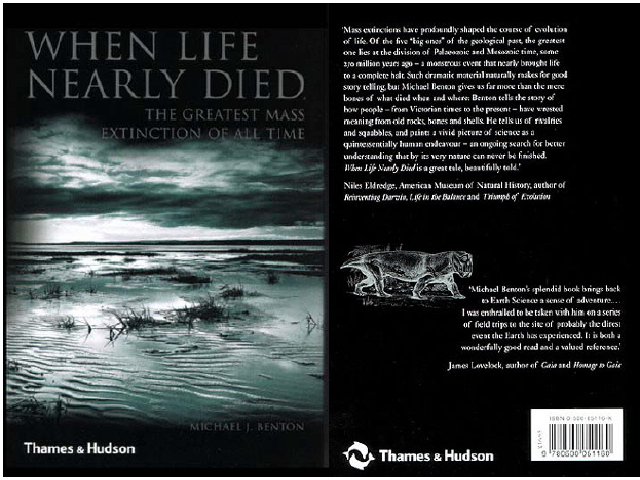Benton, M. J. 2003. When life nearly died. The greatest mass extinction of all time. – London, Thames & Hudson
Abstract
At last a book on ‘the other’ mass extinction! Benton’s book on the greatest mass extinction so far, the one at the end of the Permian period, is certainly a refreshing contribution in the fast flow of publications on mass extinction, which mainly deals with the far more widely known mass extinction at the end of the Cretaceous period, wiping out amongst others the dinosaurs and pterosaurs.
Roughly, the book can be divided in three sections. The first section deals with the beginning of modern geology and vertebrate palaeontology and the attitude towards mass extinction. Ample attention is given to the pioneering geologists and palaeontologists who are responsible for establishing various systems, such as Sedgwick and Murchison (Cambrium, Silurian and Devionian and Murchison himself the Permian). Of course, history of science, and especially these sciences involving evolution, can not go without relating the scientific (and often personal) disputes of evolutionists, Darwinists and the like, influencing the acceptation of the mass extinction theory and its causes (such as catastrophes) seriously. But also attention is given to the different scientific traditions and views between the English and continental scientists, which seriously influenced scientific objectivity and competition. Although this part relates the history of the scientific attitude towards mass extinction in general, necessary in order to understand all commotion surrounding mass extinction, the Permian mass extinction is never kept out of sight. Fortunately, Benton mentions at some point all theories explaining mass extinction, but does not discuss them in detail. Read more...
Downloads




